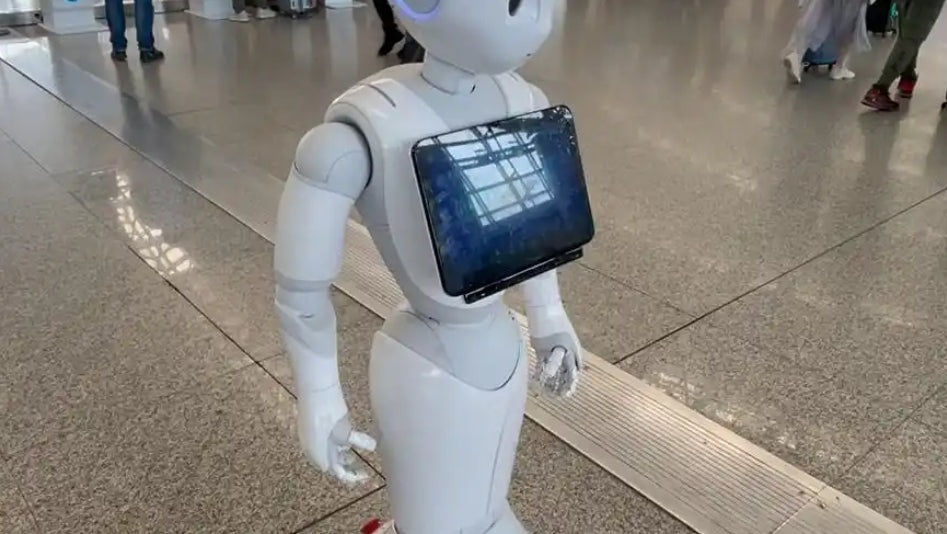Unlocking Intelligent Mobility: How TOF Cameras Advance Robot Navigation

With the rapid advancement of intelligent technologies, robots are increasingly deployed across industries such as manufacturing, logistics, healthcare, and service. At the core of autonomous decision-making and task execution lies robot navigation technology, which includes environmental perception, localization, obstacle avoidance, and path planning. To achieve precise 3D understanding of their surroundings, robots rely on high-precision sensors. Among them, TOF (Time-of-Flight) cameras have emerged as critical components due to their superior depth sensing capabilities. This article explores the diverse application scenarios and key advantages of TOF cameras in robot navigation, highlighting how this technology drives intelligent mobility forward.
What Is a TOF Camera?
A TOF camera is an imaging device that measures the distance between itself and objects by calculating the time taken for emitted light to travel to the target and back. Unlike traditional 2D cameras, TOF cameras generate depth data for every pixel, creating highly accurate real-time 3D spatial maps. They offer wide-range depth measurement, are unaffected by lighting variations, and thus excel in dynamic environments requiring robust perception.
Core Functions of TOF Cameras in Robot Navigation
The primary role of TOF cameras in navigation systems is to capture real-time, high-precision 3D spatial data that enables robots to perceive their environment in three dimensions. By leveraging the flight time of light, robots not only detect obstacles but also determine exact object positions and shapes. This supports autonomous navigation, path planning, and dynamic obstacle avoidance. Key applications include:
1. Obstacle Detection and Avoidance
Using active infrared projection, TOF cameras generate precise depth images to identify the location, size, and shape of obstacles. They perform reliably even in low-light or dark conditions, significantly improving operational safety.
-
Compared to ultrasonic sensors or traditional cameras, TOF technology offers millisecond response times and centimeter-level depth accuracy.
-
Typical uses include home cleaning robots avoiding furniture and pets, indoor delivery robots navigating crowded spaces, and industrial AGVs dynamically rerouting around moving obstacles.
2. Path Planning and Environment Mapping
Depth data from TOF cameras enables robots to build detailed point cloud models and 3D maps, often combined with SLAM (Simultaneous Localization and Mapping) to construct real-time maps while moving. This dramatically improves navigation accuracy and flexibility.
-
Facilitates safe passage in narrow spaces by measuring precise distances between walls and obstacles.
-
Provides richer 3D data than 2D images, enhancing route optimization.
-
Allows quick path adjustments when new obstacles emerge.
3. Localization and Multi-Robot Coordination
In multi-robot or large-scale automated environments, TOF cameras provide crucial spatial data for:
-
Precise self-localization, achieving centimeter-level indoor positioning without GPS.
-
Relative positioning between robots to prevent collisions and maintain formations.
-
Task synchronization in collaborative scenarios like warehouse logistics.
Additionally, TOF cameras assist robotic arms in precise object detection and manipulation, boosting adaptability and accuracy in industrial tasks.
Application Scenarios of TOF Cameras in Robot Navigation
Autonomous Mobile Robots (AMRs)
In urban and outdoor settings, AMRs use TOF cameras to detect and avoid dynamic obstacles such as pedestrians and vehicles. Compared with LiDAR, TOF cameras are more cost-effective and provide real-time depth sensing suitable for mobile autonomy.
Service Robots
Operating in hotels, hospitals, malls, and homes, service robots depend heavily on TOF cameras for:
-
High-precision obstacle detection including transparent or low-height objects.
-
Dynamic path navigation in crowded, changing environments.
-
Environmental modeling for adaptive learning of common routes and layouts.
-
Enhancing user interaction with gesture recognition and contactless controls.
Cleaning Robots
Robotic vacuum cleaners utilize TOF cameras for 3D mapping and efficient route planning, avoiding furniture and walls, and performing well in dim lighting for night-time cleaning.
Drones
In complex or indoor spaces, drones use TOF cameras for precise positioning and collision avoidance, benefiting from their robust performance under varying light conditions.
Advantages of TOF Cameras in Robot Navigation
-
High Precision and Real-Time Performance
Delivering millimeter-level depth accuracy with millisecond latency, TOF cameras enable responsive navigation even in fast-moving scenarios. -
Lighting Condition Independence
Active infrared projection ensures stable operation regardless of ambient lighting, indoors or outdoors. -
Compact Size and Low Power Consumption
Small and energy-efficient, TOF cameras fit well into compact or portable robots, supporting long operational times. -
Efficient 3D Mapping and Navigation
Rapid generation of detailed 3D models empowers robots to navigate complex environments and dynamically react to changes.
Conclusion
As an advanced depth sensing technology, TOF cameras are becoming indispensable in modern robot navigation systems. Their high accuracy, real-time responsiveness, and adaptability to diverse lighting conditions make them ideal for autonomous navigation, positioning, and obstacle avoidance. With ongoing technological progress and decreasing costs, TOF cameras will play an increasingly vital role in advancing intelligent robotics across multiple industries.
New Unitree L2 Bionic 4D LiDAR sensor 3D Scanner 360° TOF Performance improvement For Robot Navigation and obstacle avoidance
Our professional technical team specializing in 3D camera ranging is ready to assist you at any time. Whether you encounter any issues with your TOF camera after purchase or need clarification on TOF technology, feel free to contact us anytime. We are committed to providing high-quality technical after-sales service and user experience, ensuring your peace of mind in both shopping and using our products.







